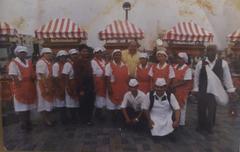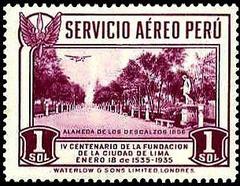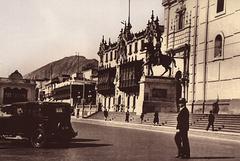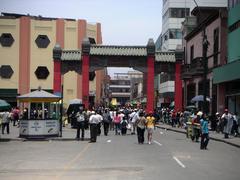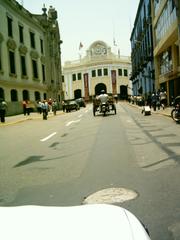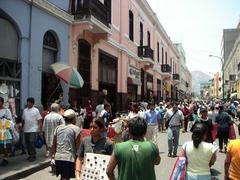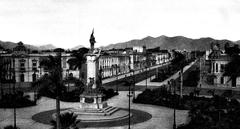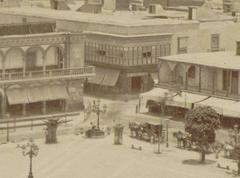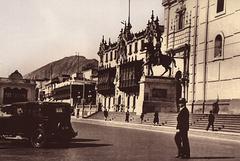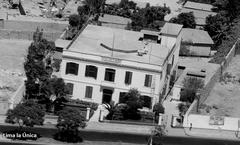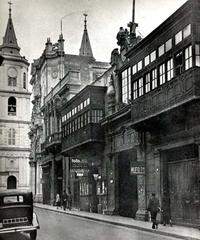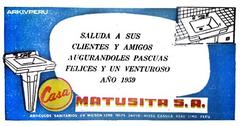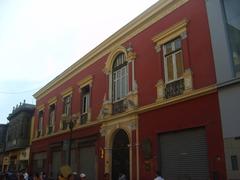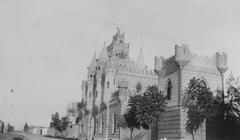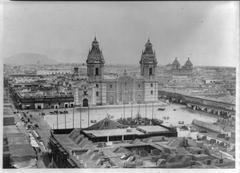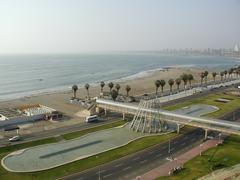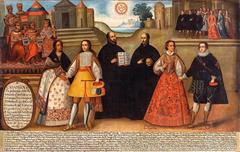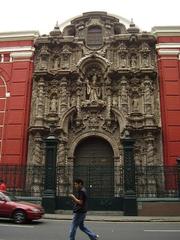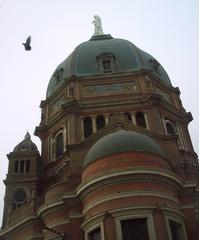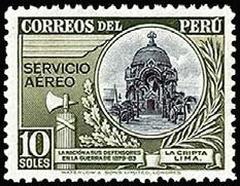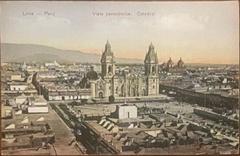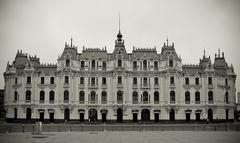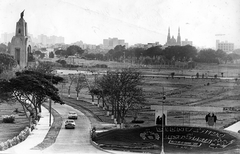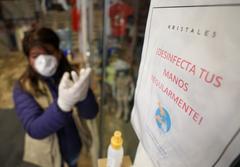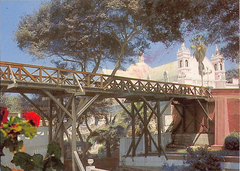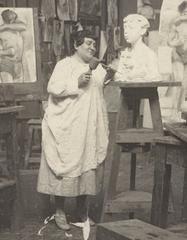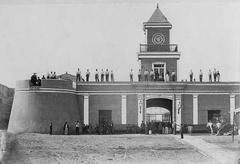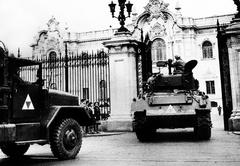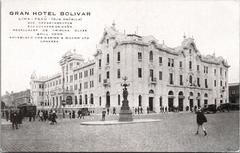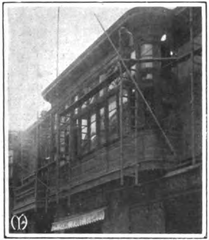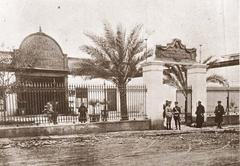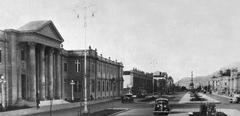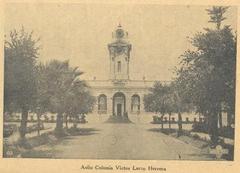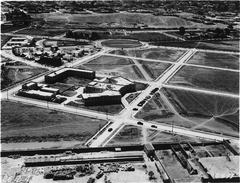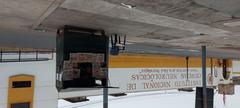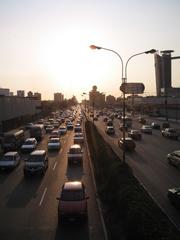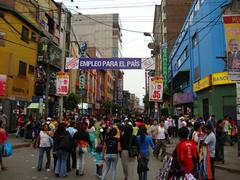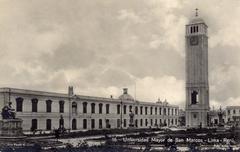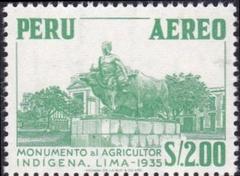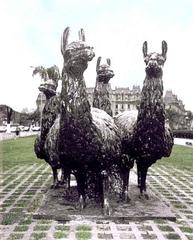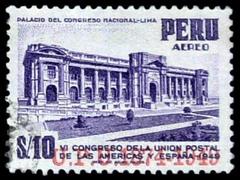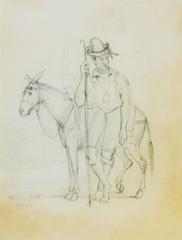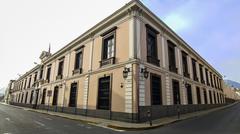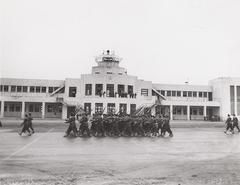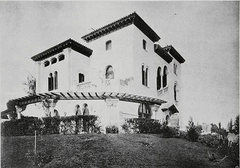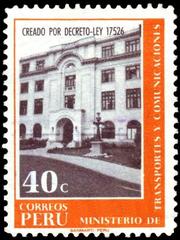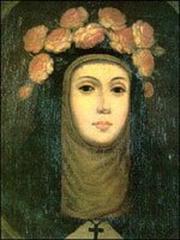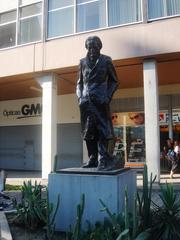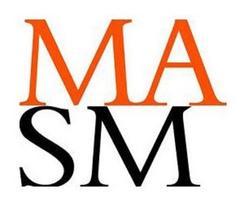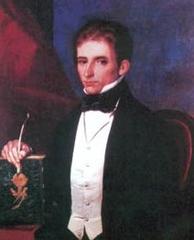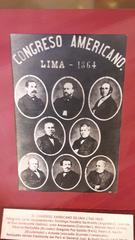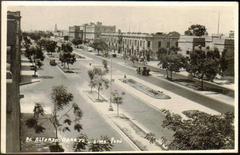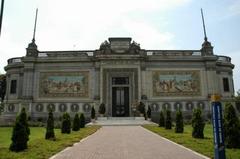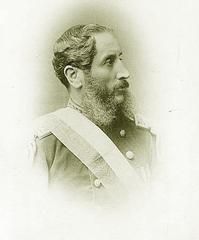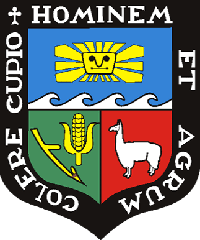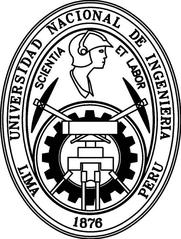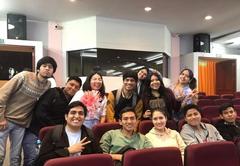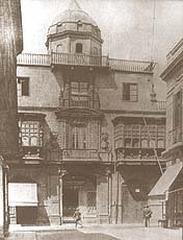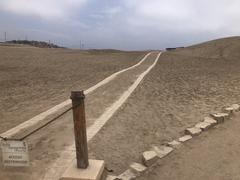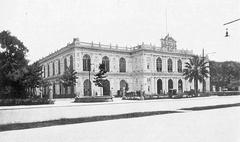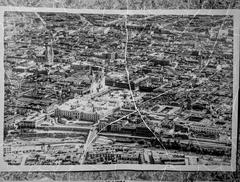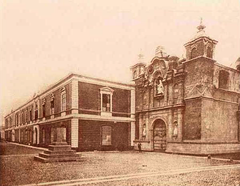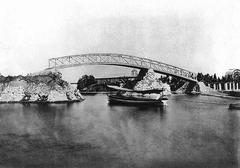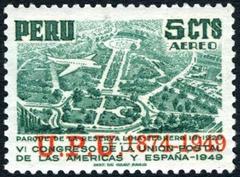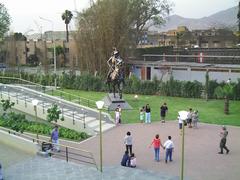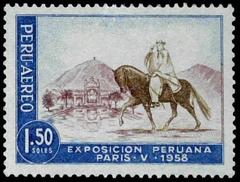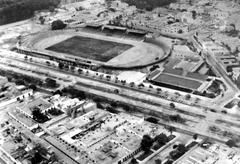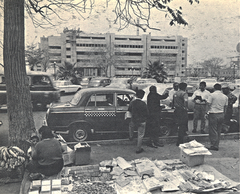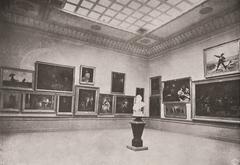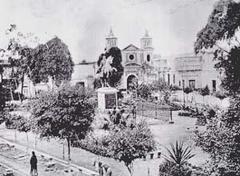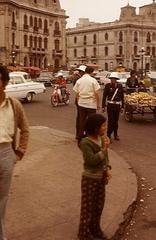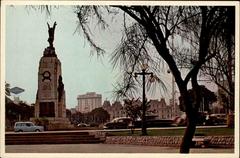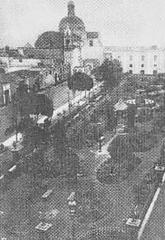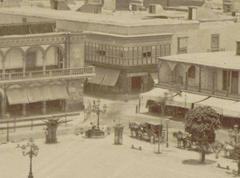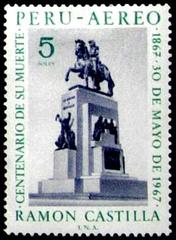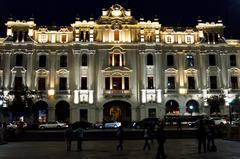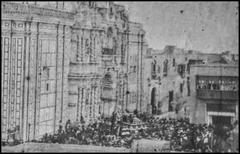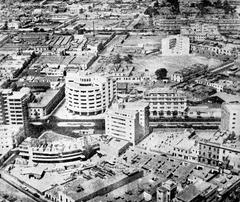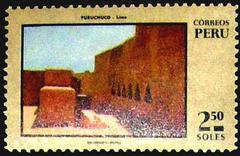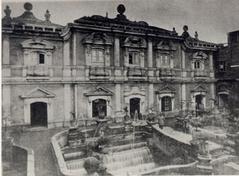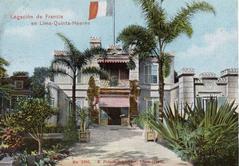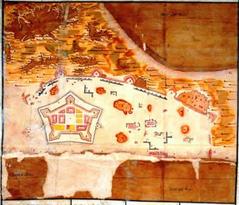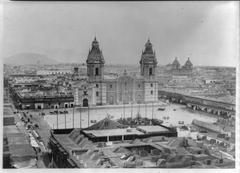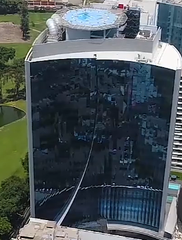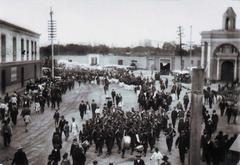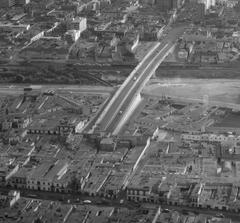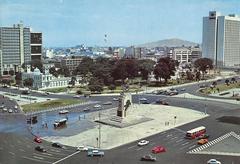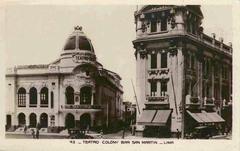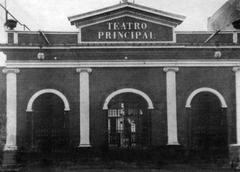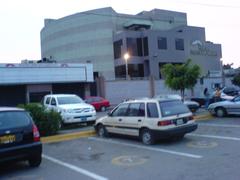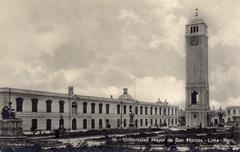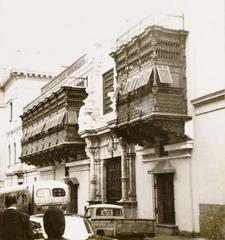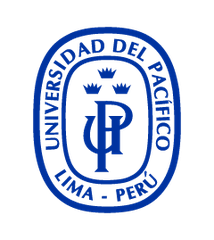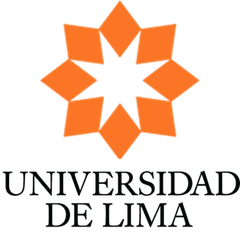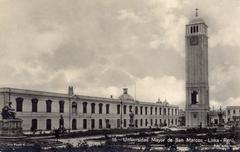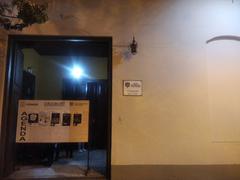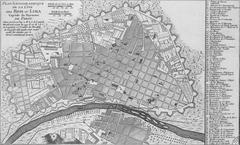Visiting Hours, Tickets, and Historical Significance of Memorial El Ojo que Llora in Lima
Date: 01/08/2024
Introduction
The Memorial El Ojo que Llora, located in Lima, Peru, stands as a poignant and powerful symbol of the country’s turbulent past and its ongoing journey towards reconciliation and healing. Inaugurated on August 28, 2005, this memorial was established to honor the nearly 70,000 victims of the internal conflict that plagued Peru from the 1980s to the early 2000s. The conflict, primarily involving the Peruvian government and insurgent groups such as the Shining Path (Sendero Luminoso) and the Túpac Amaru Revolutionary Movement (MRTA), left deep scars on the nation (La República).
Designed by renowned contemporary sculptor Lika Mutal, the memorial features a central stone sculpture of a crying eye, symbolizing collective grief and the need for remembrance. This eye, named “Madre Tierra – Pachamama,” is surrounded by a labyrinthine complex of 11 concentric circles made from river stones, each bearing the names of the conflict’s victims. This interactive piece of art not only serves as a reminder of the atrocities but also as a space for reflection and healing (Perú Legal).
Declared a Patrimonio Cultural de la Nación by the Ministry of Culture of Peru in 2022, El Ojo que Llora plays a crucial role in the collective memory and reconciliation process in Peru. It provides a platform for educational programs and cultural events, fostering a deeper understanding of the human cost of conflict and the importance of peace and human rights (La República). This comprehensive guide covers the memorial’s history, design, visiting hours, ticket information, and more, providing essential information for a meaningful and respectful visit.
Table of Contents
- Introduction
- Inception and Purpose
- Design and Symbolism
- Visitor Information
- Recognition and Significance
- Nearby Attractions
- Attacks and Restoration
- Role in Memory and Reconciliation
- Educational and Cultural Impact
- FAQ
- Conclusion
Inception and Purpose
The Memorial El Ojo que Llora was inaugurated on August 28, 2005, coinciding with the anniversary of the final report of the Comisión de la Verdad y Reconciliación (CVR) in Peru. This memorial was established to honor the victims of the internal conflict that plagued Peru from the 1980s to the early 2000s. The conflict, primarily between the Peruvian government and insurgent groups like the Shining Path (Sendero Luminoso) and the Túpac Amaru Revolutionary Movement (MRTA), resulted in widespread violence and significant loss of life.
The memorial was designed by Lika Mutal, a renowned contemporary sculptor, and is an interactive piece of art that serves as a poignant reminder of the period’s atrocities. The central sculpture, a stone representation of a crying eye, symbolizes the collective grief and the need for remembrance and reconciliation (La República).
Design and Symbolism
The central feature of the memorial is a stone sculpture representing a crying eye, which is surrounded by a labyrinthine complex. This design is not merely aesthetic but deeply symbolic. The eye, named “Madre Tierra – Pachamama,” stands 215 centimeters tall and 210 centimeters wide, symbolizing the earth’s sorrow and the tears shed for the victims (Perú Legal).
The labyrinth surrounding the central sculpture is composed of 11 concentric circles made from thick bands of river stones. These stones bear the names, ages, and years of death or disappearance of the victims registered in the Registro Único de Víctimas (RUV), established by Law 28592. Initially, the memorial featured 32,000 names written by hand, but due to exposure to the elements, these names faded. Currently, 16,608 names are engraved in bas-relief, with 18,600 more yet to be added (La República).
Visitor Information
Memorial El Ojo que Llora Visiting Hours
The Memorial El Ojo que Llora is open to visitors from Monday to Sunday, 9 AM to 6 PM. It is advisable to check the official website or contact the local tourism office for any changes in visiting hours.
Memorial El Ojo que Llora Tickets
Entrance to the Memorial El Ojo que Llora is free of charge, allowing everyone the opportunity to reflect on this significant historical site. Donations are welcome to aid in the memorial’s upkeep and restoration efforts.
Accessibility
The memorial is accessible to visitors with disabilities, ensuring that everyone can partake in the experience. Wheelchair ramps and guided tours for those with special needs are available upon request.
Recognition and Significance
On January 25, 2022, the Ministry of Culture of Peru declared El Ojo que Llora as a Patrimonio Cultural de la Nación. This designation was formalized through the Resolución Viceministerial N.° 000018-2022-VMPCIC/MC, signed by Sonaly Tuesta, the Vice Minister of Cultural Heritage and Cultural Industries (Perú Legal). The memorial’s recognition underscores its historical, artistic, and intellectual value, providing a space for reflection on the violent period in Peru’s history and promoting a culture of peace and human rights.
Nearby Attractions
While in Lima, visitors can also explore nearby historical sites such as the Huaca Pucllana, the Lima Art Museum (MALI), and the Plaza de Armas. These attractions offer a broader understanding of Peru’s rich cultural heritage.
Attacks and Restoration
Since its inauguration, El Ojo que Llora has faced several attacks and acts of vandalism. These incidents reflect the ongoing tensions and differing perspectives on the period of violence it commemorates. Despite these challenges, the memorial has been restored multiple times, demonstrating the resilience and commitment of those dedicated to preserving its message and significance (La República).
Role in Memory and Reconciliation
El Ojo que Llora plays a crucial role in the collective memory and reconciliation process in Peru. It serves as a place where families of the victims can come to remember and honor their loved ones. The memorial also provides a space for the public to reflect on the consequences of violence and the importance of building a peaceful and democratic society.
Jennie Dador, the executive secretary of the Coordinadora Nacional de Derechos Humanos, emphasized that the memorial allows for reflection on the terrible consequences of the violence and the necessity of striving for a Peru free from all forms of violence. She highlighted that its designation as a Patrimonio Cultural de la Nación is a milestone in the fight for memory policies (La República).
Educational and Cultural Impact
The memorial’s educational impact is significant, as it provides a tangible connection to a critical period in Peru’s history. It encourages visitors to learn about the past and understand the importance of human rights and the rule of law. The memorial’s design and the stories it tells foster a deeper understanding of the human cost of conflict and the value of peace.
The Ministry of Culture and various human rights organizations continue to use El Ojo que Llora as a platform for educational programs and cultural events. These initiatives aim to keep the memory of the victims alive and to educate future generations about the importance of reconciliation and the dangers of political violence (La República).
FAQ
Q: What are the visiting hours for Memorial El Ojo que Llora?
A: The memorial is open daily from 9 AM to 6 PM.
Q: Is there an entrance fee for Memorial El Ojo que Llora?
A: No, entrance is free of charge.
Q: Is the memorial accessible for visitors with disabilities?
A: Yes, the memorial is wheelchair accessible, and guided tours for visitors with special needs are available upon request.
Q: Are there any guided tours available?
A: Yes, guided tours can be arranged by contacting the local tourism office.
Q: What are some nearby attractions to visit?
A: Nearby attractions include the Huaca Pucllana, the Lima Art Museum (MALI), and the Plaza de Armas.
Conclusion
The Memorial El Ojo que Llora stands as a testament to the resilience of the human spirit and the enduring importance of remembering and honoring those who suffered during one of the darkest periods in Peru’s history. As you plan your visit, take the time to reflect on the significance of this memorial and the lessons it imparts about the value of peace and human rights.
References
- La República. (2022, January 26). Ministerio de Cultura: El Ojo que Llora es ahora Patrimonio Cultural de la Nación - Gisela Ortiz. La República.
- Perú Legal. (2022, January 25). Ministerio de Cultura: El Ojo que Llora es ahora Patrimonio Cultural de la Nación - Gisela Ortiz. Perú Legal.
